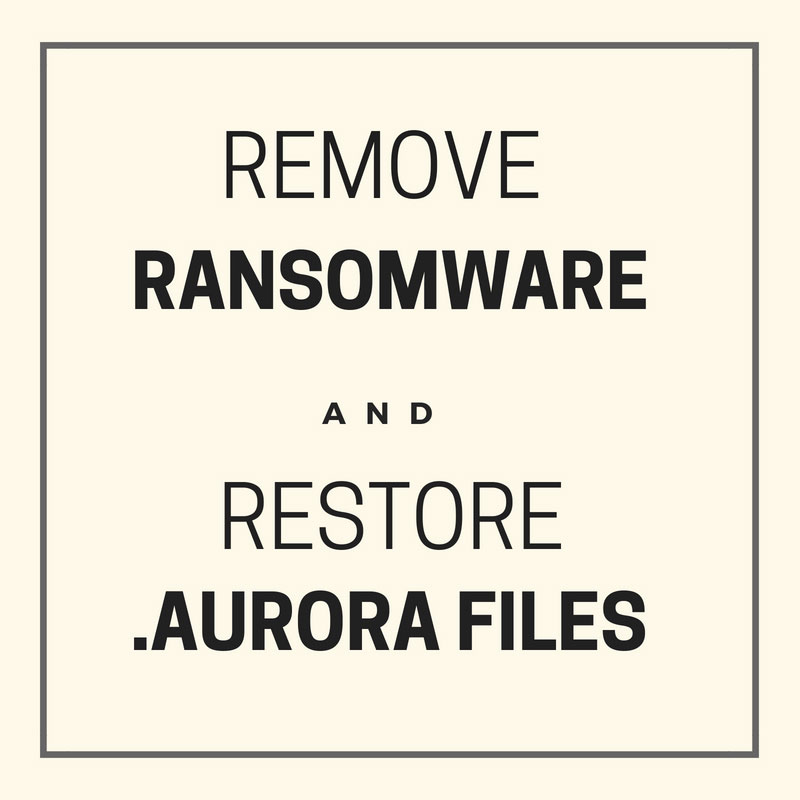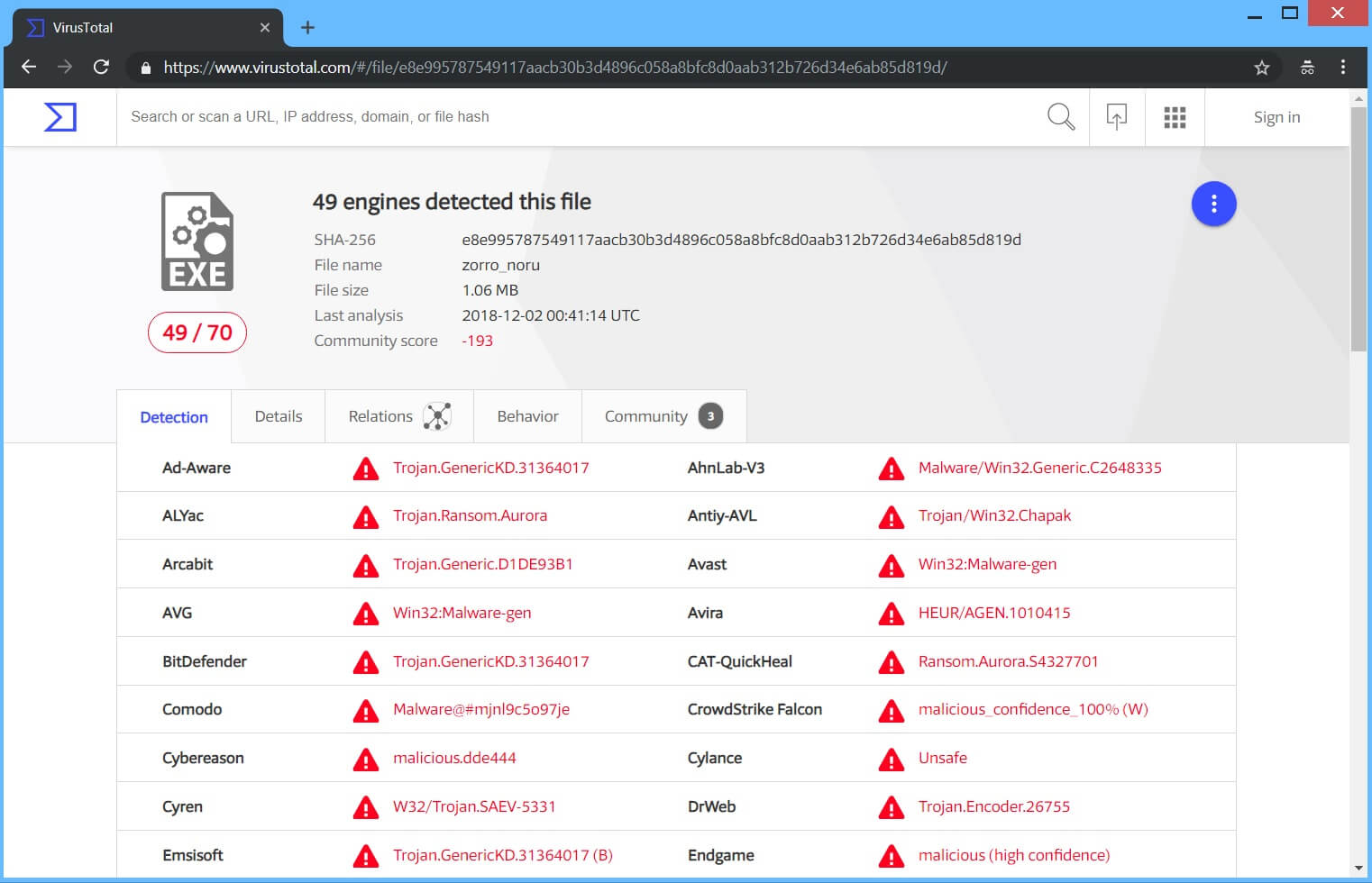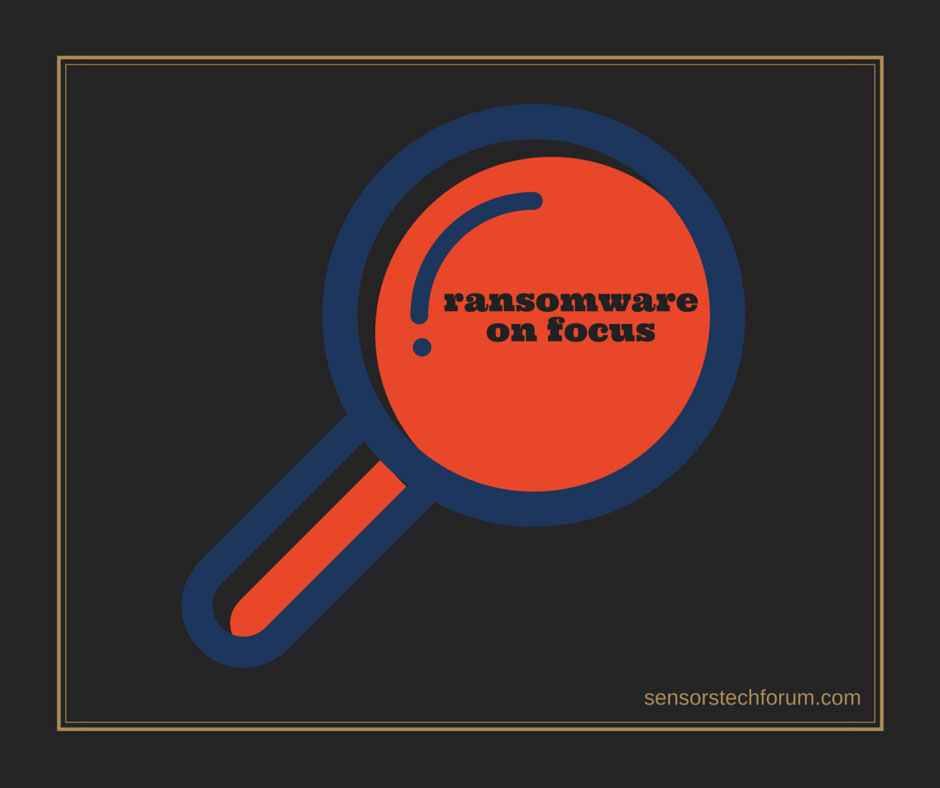This article provides information about a data locker ransomware dubbed Aurora that encrypts important files and demands a ransom payment. By the end of it, you will know how to remove the threat and how to restore .aurora files.
The .aurora files virus causes enduring damage to important files stored on your infected computer. Corrupted files can be recognized by the specific extension .aurora that stands at the end of their original names. The main solution for their decryption is held by the hackers who demand a ransom payment for it. However, the decryption key possessed by them may be broken or missing at all. That’s why it is recommendable to consider alternative methods to deal with the problem before you rush into paying $500 ransom.

Threat Summary
| Name | .aurora Files Virus |
| Type | Ransomware, Cryptovirus |
| Short Description | A data locker ransomware that utilizes strong cihper algorithm to encrypt files stored on the infected computer. Then it demands a ransom for decryption solution. |
| Symptoms | Important files are locked and renamed with .aurora extension. They remain unusable until a ransom is paid. |
| Distribution Method | Spam Emails, Email Attachments |
| Detection Tool |
See If Your System Has Been Affected by malware
Download
Malware Removal Tool
|
User Experience | Join Our Forum to Discuss .aurora Files Virus. |
| Data Recovery Tool | Windows Data Recovery by Stellar Phoenix Notice! This product scans your drive sectors to recover lost files and it may not recover 100% of the encrypted files, but only few of them, depending on the situation and whether or not you have reformatted your drive. |

.aurora Files Virus – Update January 2019

.aurora Files Virus – Update December 2018
The .aurora Files Virus keeps on spreading even in December, 2018. New samples of this ransomware have been spotted by malware researchers recently and during November as well. You can see the current detections on the VirusTotal service:
The Aurora ransomware still encrypts files by adding the same extension, namely .aurora and researchers say that it is decryptable. Other than that there is not much difference in the modus operandi of the cryptovirus.

.aurora Files Virus – Distribution
Mainly Aurora’s payload may be spread via email spam campaigns that distribute corrupted attached files. Even though, the emails seem legit the attached files contain files that trigger ransomware attack at the moment they are opened on the PC. To make you more prone to open the attached files, hackers impersonate representatives of well-known companies or even governmental institutions. The attachments usually are documents, archives, images and other commonly used file formats.
For the sake of your security, you could see how to use a free online file extractor that quickly identifies whether an uploaded file contains malicious elements or not. Thus it could help you to avoid opening malicious files that cause severe malware infections like Aurora ransomware.

.aurora Files Virus – Overview
Once Aurora‘s payload is running on the system it creates new malicious files that are needed for the next stages of the attack. Some of the malicious files may take over essential system processes in order to remain undetected until the end of the infection process.
Aurora ransomware exploits the auto-execute system functionality by settings some malicious values under Run and RunOnce registry sub-keys. After this happens, the threat acquires a persistent presence on the system as its files execute automatically on each system start.
It is likely that specific values added under the same keys help .aurora files virus to display its ransom note on the PC screen. The note is dropped on the system as a file called HOW_TO_DECRYPT_YOUR_FILES.txt and all that it reads is:
===# aurora ransomware #===
Aurora Ransomware
—
SORRY! Your files are encrypted.
File contents are encrypted with random key.
Random key is encrypted with RSA public key (2048 bit).
We STRONGLY RECOMMEND you NOT to use any “decryption tools”.
These tools can damage your data, making recover IMPOSSIBLE.
Also we recommend you not to contact data recovery companies.
They will just contact us, buy the key and sell it to you at a higher price.
If you want to decrypt your files, you have to get RSA private key.
In order to get private key, write here:
anonimus.mr@yahoo.com
And pay 500$ on 3CwxawqJpM4RBNididvHf8LhFA2VfLsRjM wallet
If someone else offers you files restoring, ask him for test decryption.
Only we can successfully decrypt your files; knowing this can protect you from fraud.
You will receive instructions of what to do next.
===# aurora ransomware #===
Beware that the payment of the ransom doesn’t guarantee the efficient decryption of .aurora files. Hackers could only steal your money and use them to launch new attack campaigns or create new malware threats.
The analyses of Aurora’s samples reveal that it contacts two hosts during the infection stage. The bad news is that hackers could use installed malware files to get access to the system and track your online and offline activities. So as long as files associated with .aurora files virus are running on your system avoid entering financial and login credentials on the websites you visit.
As an additional impact, the ransomware may connect your device to a crypto mining pool by contacting corrupted domains that have embedded JS/Coinminer on them. The primary symptom that could help you to notice this additional malware is the highly elevated usage of your CPU or GPU (or both) resources even when only a few programs are running on your computer system.

.aurora Files Virus – Encryption Process
The code of Aurora ransomware is designed to store information about all types of files which it needs to locate on infected systems and then utilize strong cipher algorithm to encrypt them. During the encryption process target files get modified with the help of strong cipher algorithm that makes them completely inaccessible. An infection with this ransomware is likely to lead to the corruption of the following data:
- Audio files
- Video files
- Document files
- Image files
- Backup files
- Text files
All encrypted files are renamed with the extension .aurora that stands at the end of their original names. Your access to the information stored by .aurora files is restricted until an efficient data recovery solution reverts their code back.

Remove .aurora Files Virus and Restore Data
The removal of the so-called .aurora crypto virus demands a bit of technical experience and ability to recognize characteristics of malware files. And there is no doubt that you should remove this nasty threat from the infected PC as soon as you detect it. Below you could find how to do it step by step. Beware that ransomware has highly complex code that could plague not only your files but your whole system. So as recommended by security researchers you need to utilize an advanced anti-malware tool for its complete removal. Such tool will keep your system protected against devastating threats like .aurora files virus as well as all other kinds of malware in future.
After you remove the ransomware make sure to check the “Restore Files” step listed in the guide below. But before you take any further actions, don’t forget to back up all encrypted files to an external drive in order to prevent their irreversible loss.
- Step 1
- Step 2
- Step 3
- Step 4
- Step 5
Step 1: Scan for .aurora Files Virus with SpyHunter Anti-Malware Tool



Ransomware Automatic Removal - Video Guide
Step 2: Uninstall .aurora Files Virus and related malware from Windows
Here is a method in few easy steps that should be able to uninstall most programs. No matter if you are using Windows 10, 8, 7, Vista or XP, those steps will get the job done. Dragging the program or its folder to the recycle bin can be a very bad decision. If you do that, bits and pieces of the program are left behind, and that can lead to unstable work of your PC, errors with the file type associations and other unpleasant activities. The proper way to get a program off your computer is to Uninstall it. To do that:


 Follow the instructions above and you will successfully delete most unwanted and malicious programs.
Follow the instructions above and you will successfully delete most unwanted and malicious programs.
Step 3: Clean any registries, created by .aurora Files Virus on your computer.
The usually targeted registries of Windows machines are the following:
- HKEY_LOCAL_MACHINE\Software\Microsoft\Windows\CurrentVersion\Run
- HKEY_CURRENT_USER\Software\Microsoft\Windows\CurrentVersion\Run
- HKEY_LOCAL_MACHINE\Software\Microsoft\Windows\CurrentVersion\RunOnce
- HKEY_CURRENT_USER\Software\Microsoft\Windows\CurrentVersion\RunOnce
You can access them by opening the Windows registry editor and deleting any values, created by .aurora Files Virus there. This can happen by following the steps underneath:


 Tip: To find a virus-created value, you can right-click on it and click "Modify" to see which file it is set to run. If this is the virus file location, remove the value.
Tip: To find a virus-created value, you can right-click on it and click "Modify" to see which file it is set to run. If this is the virus file location, remove the value.
Before starting "Step 4", please boot back into Normal mode, in case you are currently in Safe Mode.
This will enable you to install and use SpyHunter 5 successfully.
Step 4: Boot Your PC In Safe Mode to isolate and remove .aurora Files Virus





Step 5: Try to Restore Files Encrypted by .aurora Files Virus.
Method 1: Use STOP Decrypter by Emsisoft.
Not all variants of this ransomware can be decrypted for free, but we have added the decryptor used by researchers that is often updated with the variants which become eventually decrypted. You can try and decrypt your files using the instructions below, but if they do not work, then unfortunately your variant of the ransomware virus is not decryptable.
Follow the instructions below to use the Emsisoft decrypter and decrypt your files for free. You can download the Emsisoft decryption tool linked here and then follow the steps provided below:
1 Right-click on the decrypter and click on Run as Administrator as shown below:

2. Agree with the license terms:

3. Click on "Add Folder" and then add the folders where you want files decrypted as shown underneath:

4. Click on "Decrypt" and wait for your files to be decoded.

Note: Credit for the decryptor goes to Emsisoft researchers who have made the breakthrough with this virus.
Method 2: Use data recovery software
Ransomware infections and .aurora Files Virus aim to encrypt your files using an encryption algorithm which may be very difficult to decrypt. This is why we have suggested a data recovery method that may help you go around direct decryption and try to restore your files. Bear in mind that this method may not be 100% effective but may also help you a little or a lot in different situations.
Simply click on the link and on the website menus on the top, choose Data Recovery - Data Recovery Wizard for Windows or Mac (depending on your OS), and then download and run the tool.
.aurora Files Virus-FAQ
What is .aurora Files Virus Ransomware?
.aurora Files Virus is a ransomware infection - the malicious software that enters your computer silently and blocks either access to the computer itself or encrypt your files.
Many ransomware viruses use sophisticated encryption algorithms to make your files inaccessible. The goal of ransomware infections is to demand that you pay a ransom payment to get access to your files back.
What Does .aurora Files Virus Ransomware Do?
Ransomware in general is a malicious software that is designed to block access to your computer or files until a ransom is paid.
Ransomware viruses can also damage your system, corrupt data and delete files, resulting in the permanent loss of important files.
How Does .aurora Files Virus Infect?
Via several ways..aurora Files Virus Ransomware infects computers by being sent via phishing emails, containing virus attachment. This attachment is usually masked as an important document, like an invoice, bank document or even a plane ticket and it looks very convincing to users.
Another way you may become a victim of .aurora Files Virus is if you download a fake installer, crack or patch from a low reputation website or if you click on a virus link. Many users report getting a ransomware infection by downloading torrents.
How to Open ..aurora Files Virus files?
You can't without a decryptor. At this point, the ..aurora Files Virus files are encrypted. You can only open them once they are decrypted using a specific decryption key for the particular algorithm.
What to Do If a Decryptor Does Not Work?
Do not panic, and backup the files. If a decryptor did not decrypt your ..aurora Files Virus files successfully, then do not despair, because this virus is still new.
Can I Restore "..aurora Files Virus" Files?
Yes, sometimes files can be restored. We have suggested several file recovery methods that could work if you want to restore ..aurora Files Virus files.
These methods are in no way 100% guaranteed that you will be able to get your files back. But if you have a backup, your chances of success are much greater.
How To Get Rid of .aurora Files Virus Virus?
The safest way and the most efficient one for the removal of this ransomware infection is the use a professional anti-malware program.
It will scan for and locate .aurora Files Virus ransomware and then remove it without causing any additional harm to your important ..aurora Files Virus files.
Can I Report Ransomware to Authorities?
In case your computer got infected with a ransomware infection, you can report it to the local Police departments. It can help authorities worldwide track and determine the perpetrators behind the virus that has infected your computer.
Below, we have prepared a list with government websites, where you can file a report in case you are a victim of a cybercrime:
Cyber-security authorities, responsible for handling ransomware attack reports in different regions all over the world:
Germany - Offizielles Portal der deutschen Polizei
United States - IC3 Internet Crime Complaint Centre
United Kingdom - Action Fraud Police
France - Ministère de l'Intérieur
Italy - Polizia Di Stato
Spain - Policía Nacional
Netherlands - Politie
Poland - Policja
Portugal - Polícia Judiciária
Greece - Cyber Crime Unit (Hellenic Police)
India - Mumbai Police - CyberCrime Investigation Cell
Australia - Australian High Tech Crime Center
Reports may be responded to in different timeframes, depending on your local authorities.
Can You Stop Ransomware from Encrypting Your Files?
Yes, you can prevent ransomware. The best way to do this is to ensure your computer system is updated with the latest security patches, use a reputable anti-malware program and firewall, backup your important files frequently, and avoid clicking on malicious links or downloading unknown files.
Can .aurora Files Virus Ransomware Steal Your Data?
Yes, in most cases ransomware will steal your information. It is a form of malware that steals data from a user's computer, encrypts it, and then demands a ransom in order to decrypt it.
In many cases, the malware authors or attackers will threaten to delete the data or publish it online unless the ransom is paid.
Can Ransomware Infect WiFi?
Yes, ransomware can infect WiFi networks, as malicious actors can use it to gain control of the network, steal confidential data, and lock out users. If a ransomware attack is successful, it could lead to a loss of service and/or data, and in some cases, financial losses.
Should I Pay Ransomware?
No, you should not pay ransomware extortionists. Paying them only encourages criminals and does not guarantee that the files or data will be restored. The better approach is to have a secure backup of important data and be vigilant about security in the first place.
What Happens If I Don't Pay Ransom?
If you don't pay the ransom, the hackers may still have access to your computer, data, or files and may continue to threaten to expose or delete them, or even use them to commit cybercrimes. In some cases, they may even continue to demand additional ransom payments.
Can a Ransomware Attack Be Detected?
Yes, ransomware can be detected. Anti-malware software and other advanced security tools can detect ransomware and alert the user when it is present on a machine.
It is important to stay up-to-date on the latest security measures and to keep security software updated to ensure ransomware can be detected and prevented.
Do Ransomware Criminals Get Caught?
Yes, ransomware criminals do get caught. Law enforcement agencies, such as the FBI, Interpol and others have been successful in tracking down and prosecuting ransomware criminals in the US and other countries. As ransomware threats continue to increase, so does the enforcement activity.
About the .aurora Files Virus Research
The content we publish on SensorsTechForum.com, this .aurora Files Virus how-to removal guide included, is the outcome of extensive research, hard work and our team’s devotion to help you remove the specific malware and restore your encrypted files.
How did we conduct the research on this ransomware?
Our research is based on an independent investigation. We are in contact with independent security researchers, and as such, we receive daily updates on the latest malware and ransomware definitions.
Furthermore, the research behind the .aurora Files Virus ransomware threat is backed with VirusTotal and the NoMoreRansom project.
To better understand the ransomware threat, please refer to the following articles which provide knowledgeable details.
As a site that has been dedicated to providing free removal instructions for ransomware and malware since 2014, SensorsTechForum’s recommendation is to only pay attention to trustworthy sources.
How to recognize trustworthy sources:
- Always check "About Us" web page.
- Profile of the content creator.
- Make sure that real people are behind the site and not fake names and profiles.
- Verify Facebook, LinkedIn and Twitter personal profiles.





